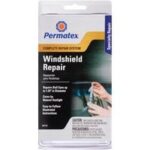Discovering a dent on your car, especially a small one, can be frustrating. You might be wondering, “How much is this going to cost me to fix?”. The good news is that small dent repair is often more affordable than you might think. This guide will break down the costs associated with repairing minor car dents, helping you understand the factors involved and how to make cost-effective decisions.
 Car Dent Repair Cost
Car Dent Repair Cost
Typically, you can expect to pay anywhere from $50 to $500 to repair a small dent on your car. This price range is influenced by several key elements, including the dent’s size and depth, its location on the vehicle, whether the paint is damaged, and the chosen repair method. Understanding these factors will give you a clearer picture of what to expect when getting your car dent repaired.
Understanding the Costs: Small Dent Repair Breakdown
When it comes to small dents, often characterized by minor dings or shallow indentations, the repair costs are significantly lower than those for major damage. Here’s a more detailed look at what influences the price you’ll pay for small dent repair:
-
Paintless Dent Removal (PDR): $50 – $150. For the most minor dents where the paint is completely intact, Paintless Dent Removal (PDR) is often the ideal and most cost-effective solution. PDR involves specialized tools used to gently massage the dent from behind the panel, restoring it to its original shape without affecting the paint finish. Think of those small door dings from car doors in parking lots or shallow hail dents – PDR is perfect for these.
-
Minor Dent Repair with Paint Touch-Up: $150 – $500. If the small dent has also resulted in minor scratches or paint chips, the repair will involve a bit more work. After the dent is reshaped, a professional will need to carefully sand the area, prime it, and then apply touch-up paint to seamlessly blend with your car’s existing color. This ensures a smooth, invisible repair but naturally adds to the cost compared to PDR alone.
It’s important to note that these are average ranges. The exact price will depend on the specifics of your dent and the repair shop you choose.
Key Factors Affecting the Cost of Your Small Car Dent Repair
Several factors come into play when determining the final cost to repair that small dent on your car. Knowing these can help you understand quotes and make informed choices:
-
Size and Depth of the Dent: Even for “small” dents, there’s a range. A dime-sized shallow ding will cost less than a slightly larger, deeper dent. The more work required to manipulate the metal back to its original form, the higher the labor cost.
-
Location of the Dent: Dents in easily accessible, flat panels are simpler and cheaper to repair. However, if your small dent is located on a curved area, near a body line, or on the edge of a panel, it requires more skill and time, potentially increasing the cost. Dents on bumpers, while sometimes appearing small, can also be more complex to repair due to bumper material and construction.
-
Paint Damage: If the dent has broken the clear coat or paint, even a small area, it necessitates paint touch-up or more extensive paintwork. Matching paint perfectly requires expertise and quality materials, which add to the overall repair cost. If the paint is undamaged, PDR becomes a viable and cheaper option.
-
Repair Method Chosen: As mentioned earlier, PDR is usually the most economical method for small dents without paint damage. Traditional repair methods involving fillers, sanding, and repainting are more labor-intensive and therefore more expensive, even for seemingly small damage.
-
Labor Rates: Different auto body shops have varying labor rates. Shops in metropolitan areas or dealerships often have higher rates than independent repair shops in smaller towns. Getting quotes from a few different places will help you compare labor costs.
Paintless Dent Removal (PDR): Your Best Bet for Minor Dents
For many small dents, especially those that are shallow and haven’t damaged the paint, Paintless Dent Removal (PDR) is the recommended repair method. Here’s why PDR is often the preferred choice for minor car dent repair:
- Cost-Effective: PDR is generally less expensive than traditional dent repair because it avoids the need for painting and extensive bodywork.
- Faster Turnaround: PDR repairs are typically quicker, often completed within a few hours, while traditional methods can take days.
- Maintains Original Paint: By preserving your car’s factory paint, PDR helps maintain its value and original finish.
- Environmentally Friendly: PDR is a “green” repair method as it doesn’t involve using paints, fillers, or chemicals.
However, PDR isn’t suitable for all types of dents. If the dent is too deep, is in a very complex area, or if the paint is damaged, traditional repair methods might be necessary.
When Might Traditional Repair Be Needed for a Small Dent?
While PDR is excellent for many small dents, there are situations where traditional repair techniques might be required, even for dents that appear minor:
- Paint Damage is Significant: If the scratch or paint chip associated with the small dent is deep or extensive, PDR alone won’t suffice. Painting is necessary to restore the finish.
- Dent is in a Difficult Location: Dents in areas with double-layered metal or very tight spaces might be inaccessible for PDR tools.
- Dent is Too Sharp or Deep: Extremely sharp or deep small dents can stretch the metal beyond what PDR can effectively repair without potentially damaging the paint or causing further issues.
In these cases, traditional dent repair, which involves filling, sanding, and repainting, becomes the more appropriate method to ensure a high-quality and lasting repair.
DIY vs. Professional Small Dent Repair: What’s Right for You?
For very minor, shallow dents, you might be tempted to try a DIY dent repair kit. These kits often include tools like suction cups or dent pullers. While DIY might seem like a cost-saving option, consider these points:
DIY Pros:
- Potentially Lower Cost (Initially): DIY kits are cheaper than professional repair in the short term.
DIY Cons:
- Risk of Further Damage: Improper use of DIY tools can worsen the dent, damage the paint, or even create new dents.
- Quality of Repair: DIY repairs often don’t achieve the seamless finish of professional work, potentially affecting your car’s appearance and resale value.
- Time and Effort: DIY repair can be time-consuming and frustrating, especially without experience.
Professional Repair Pros:
- Expertise and Skill: Professionals have the training, experience, and specialized tools to repair dents correctly.
- High-Quality Results: Professional repair ensures a seamless, invisible finish, restoring your car’s appearance.
- Warranty: Many reputable repair shops offer warranties on their work, providing peace of mind.
Professional Repair Cons:
- Higher Cost: Professional repair is more expensive than DIY kits upfront.
Recommendation: For anything beyond the most superficial, tiny dings, professional repair is generally the safer and more effective choice. The cost of fixing mistakes from DIY attempts can often exceed the initial cost of professional repair.
Getting Accurate Quotes for Small Dent Repair
To ensure you’re getting a fair price for your small dent repair, follow these tips when seeking quotes:
- Get Multiple Estimates: Contact at least 3 different auto body shops or PDR specialists to get quotes.
- Provide Clear Information: Describe the dent accurately (size, location, paint damage). Photos can be very helpful for online or initial quotes.
- Ask About PDR: Specifically inquire if Paintless Dent Removal is an option for your dent, as it’s often the most cost-effective for small dents.
- Understand What’s Included: Make sure the quote clearly outlines the repair method, labor, materials, and any paintwork involved.
- Check Reviews and Reputation: Choose reputable shops with good online reviews and a history of quality work.
Saving Money on Small Dent Repair
While professional repair is often the best route, here are a few ways to potentially save money on small dent repair:
- Choose PDR When Possible: If your dent is suitable for PDR, it will be significantly cheaper than traditional methods.
- Compare Quotes: As mentioned, getting multiple quotes is crucial to finding competitive pricing.
- Consider Mobile PDR Services: Mobile PDR technicians can sometimes offer slightly lower prices due to lower overhead costs.
- Inquire About Discounts: Ask if the shop offers any discounts or specials.
Conclusion
Repairing a small dent on your car doesn’t have to break the bank. By understanding the factors that influence cost, exploring options like Paintless Dent Removal, and getting quotes from reputable professionals, you can navigate the repair process effectively and economically. Remember, addressing even small dents promptly can help maintain your car’s appearance and prevent potential rust or further damage down the road. Don’t let that little dent linger – get it fixed and keep your car looking its best!
Visit StormWise for Professional Car Dent Repair Services


